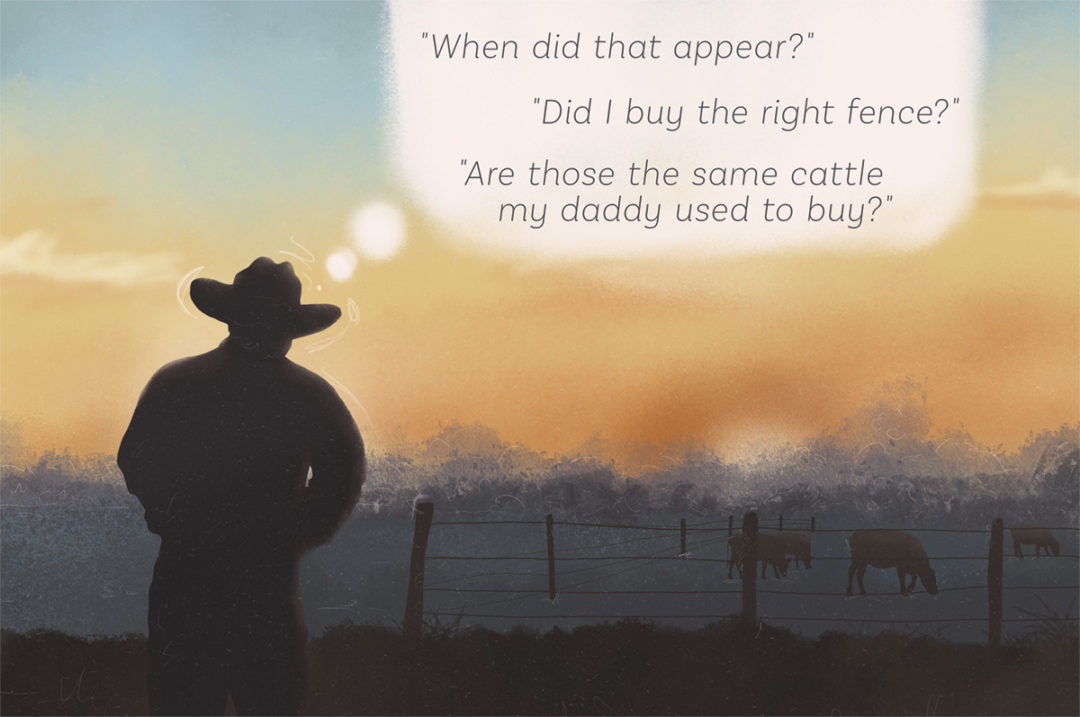Ranches are dynamic biological systems where numerous things interact with one another in the “whole” of the ranch. This makes decision-making for ranch managers challenging, as often the interaction of multiple factors needs to be considered in order to achieve a desired outcome. It also makes identifying the actual results of a decision difficult, as dynamic factors can mask the true cause and effect of a decision.
Jay Wright Forrester, who was a computer engineer and systems scientist at the Massachusetts Institute of Technology (MIT), is credited as being the founder of systems dynamics, which deals with the interaction of objects in a dynamic system. System thinking is a process of understanding how things influence one another within a whole. Interestingly, Forrester grew up on a ranch near Anselmo, Nebraska, earning a bachelor’s degree at the University of Nebraska – Lincoln and a master’s degree at MIT, where he stayed for the rest of his career.
During Forrester’s formative years, he would have seen firsthand the complexity of living on and working with a ranch system. It is likely these experiences were influential on him as he began to think about ways to address complex issues and problems. System thinking uses a holistic approach to analysis and problem-solving that sees problems as parts of an overall system rather than in isolation. It recognizes that small events can cause large changes in complex systems and focuses on cyclical, rather than linear, cause-and-effect thinking.
In his book The Fifth Discipline, Peter Senge identifies 11 “laws” that he sees as principles of understanding a systems approach to decision-making. At least seven of these laws can directly relate to the management of biological resources, such as ranches, and are a thought process that can be applied to solve problems that frequently are seen. Here are the seven:
- Today’s problems (frequently) come from yesterday’s “solutions.”
- The harder you push the system, the harder the system pushes back.
- The easy way out usually leads back in.
- The cure can be worse than the disease.
- Faster is slower.
- Cause and effect are not closely related in time and space.
- Small changes can produce big results, but the areas of the highest leverage are often the least obvious.
Consider these seven laws and how this framework of thinking could help identify long-term solutions to the problems currently faced today on many ranches. How many of today’s problems come from yesterday's solutions?
For example, in the past, in an effort to improve cow-calf profitability, emphasis was focused on increasing milk production and weaning weight. Now, genetically, many cow herds are at a place where the genetic potential for milk production is beyond what the range resources can support, requiring additional inputs of expensive supplemental and harvested feed to get cows to rebreed. This requirement of additional inputs is now actually reducing profitability, working against the very thing that was desired in selecting for increased productivity to improve profitability.
Consider applying a systems approach when thinking about ranch management and beef production. Many ranchers already do this without consciously thinking about it. Beef production occurs from conception to consumption and is a complex, biological system where cause and effect are often distant in time and space. For example, things that occurred to a calf while it was developing inside of a cow can impact that animal throughout its life, all the way to harvest. This can make it challenging to identify and address the actual source of a problem when it is observed. To better understand and address the source of problems, consider asking “Why?”
Asking why can be a very powerful tool in addressing problems in a dynamic system. When an issue occurs in a production system, there is often an effort to fix the problem without fully appreciating the why behind it. Sometimes, why needs to be asked multiple times to identify the underlying structure at the source of the problem.
The principle of asking why has value in understanding the issues facing ranchers today. Often, when problems arise, we seek to treat the symptom of the problem without taking time to identify the source of the problem. For example, a calf gets pinkeye and is treated with an antibiotic to address the problem. The calf improves after treatment and little thought is given as to why the calf got pinkeye initially.
Some questions that could be asked in a situation like this are:
- Why is pinkeye in cattle a problem?
- Why did this particular calf contract pinkeye, when most of its herdmates didn’t?
- Why is pinkeye a problem now in the herd if it hasn’t been before?
- What are the organisms that cause pinkeye in cattle?
- What conditions are conducive to pinkeye in cattle?
Asking why is one of the fundamental steps to effective problem-solving and decision-making. In systems thinking, the goal is to understand at a deeper level how systems function. Systems thinking recognizes that there are often hidden and unintended consequences to actions. For example, if a bull is treated for pinkeye and then kept as a herd sire, could that bull’s offspring have a greater likelihood of contracting the disease than those sired by a bull that never had pinkeye?
For many people, asking why is one of the first steps in a fundamental shift in thinking that allows them to address problems in new ways, helping them move toward desired long-term solutions. It also often reveals that the problems we face today are ones that we unknowingly may have created ourselves. To quote Albert Einstein, “The significant problems we face cannot be solved at the same level of thinking we were at when we created them.”











